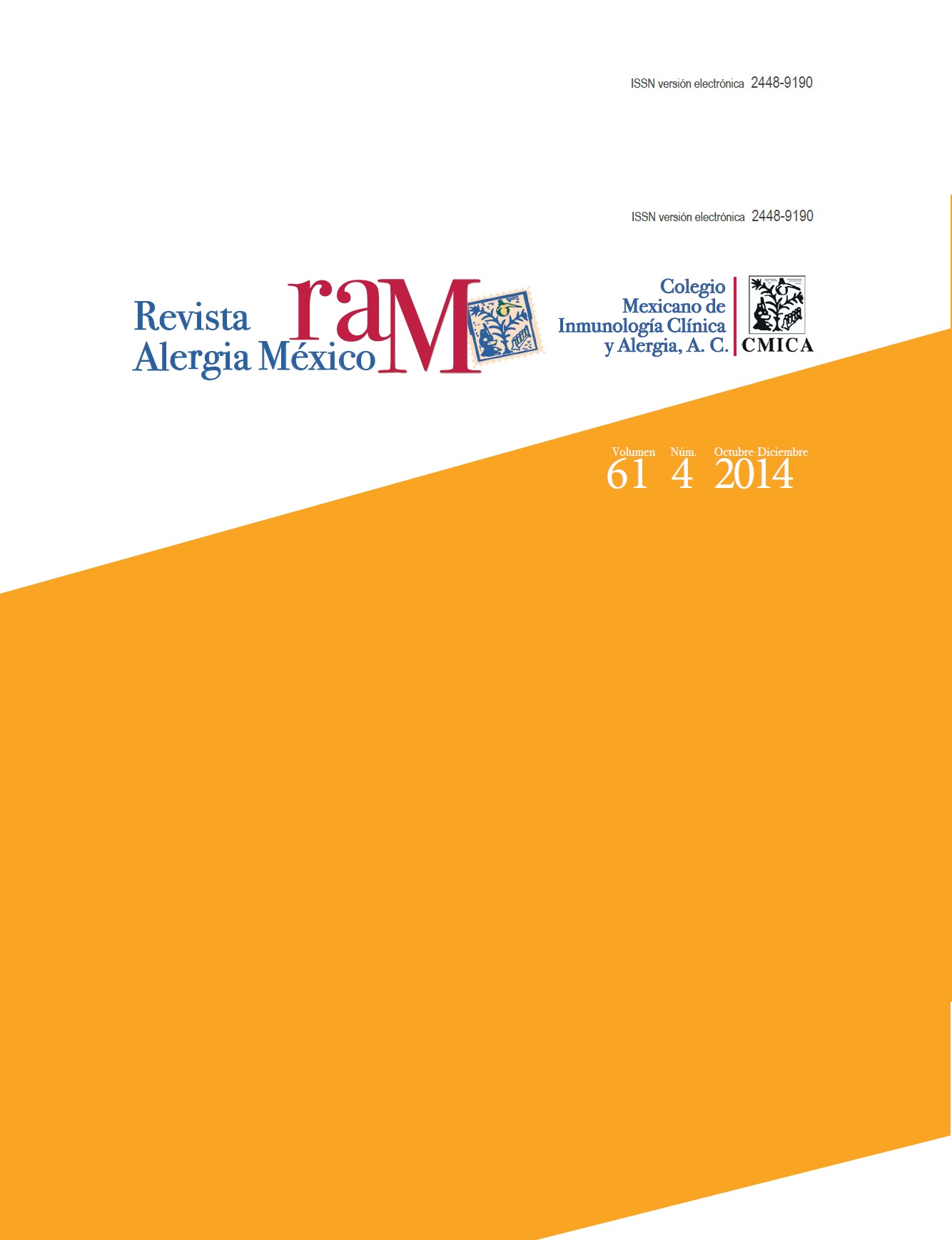Abstract
Background: Occupational allergies are becoming more frequent. The allergens present in the working environment of bakeries, such as mites, are not well identified despite being known risk factors of respiratory diseases.
Objectives: To isolate and identify the species of mites present in two bakeries in La Habana, Cuba, with high sensitization of mites on their workers.
Material and method: A descriptive study was done in which samples were taken by tripled from potential sources of mites in bakeries –as flourin use, spills of wheat on the floors, wheat flour stored in sealed bags, sugar, yeast, granulated baker– that were processed, according to the method of flotation of Hart and Fain (1987) to isolate, identify and count the mites present.
Results: Mites were found in samples of wheat flourin use, spills on the floorsand in the wheat flourstored in sealed bags. The species identified were Blomia tropicalis (70%), Tyrophagus putrescentiae (20%) and to a lesser degree Dermatophagoides pteronyssinus and Dermatophagoides siboney.
Conclusions: There is a high exposure to house dust mites, particularly to store mites, which constitute a risk factor of occupational allergy to consider.
References
Kuper HS, Orozco Manso JE. Caracterización clínico epidemiológica de las enfermedades broncopulmonares ocupacionales diagnosticadas en el Instituto Nacional de Salud de los Trabajadores1988-2006. Rev Cubana de Salud y Trabajo 2007;8:46-51.
Instituto Nacional de Prevención, Salud y Seguridad Laborales. Enfermedades ocupacionales [Internet]. [Citado 10 Mar 2009]. Disponible en: http://www.inpsasel.gov.ve/paginas/enfermedades.htm.
Fernández C. El IMSS en cifras: indicadores de salud en el trabajo. Rev Med IMSS [Internet]. 2004;42:79-88. [citado diciembre 2007] disponible en: http://www.medigraphic. com/pdfs/imss/im-2004/im041l.pdf
Álvarez-Castelló M, Castro-Almarales RL, Ronquillo-Díaz M, Rodríguez-Cala F. Asma ocupacional. Una aproximación necesaria al problema. Revista Cubana de Salud y Trabajo 2011;12:59-65.
Chan-Yeung M, Malo JL. Asthma in the workplace and occupational asthma. In: Mason RJ, Broaddus VC, Martin TR, et al, eds. Murray & Nadel’s Textbook of Respiratory Medicine. 5th ed. Philadelphia: Elsevier Saunders, 2010;64.
Arlian LG, Platts-Mills TAE. The biology of dust mites and the remediation of mite allergens in allergic disease. J Allergy Clin Immunol 2001;107:406-413.
Tovey ER, Chapman MD, Platts-Mills TAE. Mite feces are a major source of house dust allergens. Nature 1982;289:592-593.
Castro RL, Labrada A, Abdo A, González J, et al. Diagnostic efficacy of skin prick test with mite allergen extracts of D. pteronyssinus, D. siboney and Blomia tropicalis in a Cuban population. Allergy Clin Immunol Int J 2000;12:234.
Quirce S. Asma ocupacional por harina de soja en panaderos. [revista en Internet] [citado 2011 Jun 12] Disponible: http://www.alergovirtual.org.ar/ponencias/08/asma_ocu. htm
Álvarez-Castelló M, Leyva-Márquez Y, Castro-Almarales RL, Labrada-Rosado A, y col. Sensibilización a ácaros y alérgenos ocupacionales en trabajadores de una panadería de La Habana, Cuba. Rev Alerg Mex 2012;59:9-15.
Hart BJ, Fain A. A new technique for the isolation of mites exploiting the differences in density between ethanol and saturated NaCl, qualitative and quantitative studies. Acarologia 1987;28:251-254.
Colloff MJ. Dust Mite. 2009.
Arlian LG, Rapp CM, Ahmed SG. Development of Dermatophagoides pteronyssinus (Acari; Pyrologyphidae). J Med Entomol 1990;27:1035-1040.
Colloff MJ. Differences in development, time, mortality and water loss between egg from laboratory and wild populations of Dermatophagoides pteronyssinus (Trouessart 1987) (Acari; Pyrologyphidae). Exp Appl Acarol 1987;3:191-200.
Mariana A, Ho TM, Heah SK. Life-cycle, longevity and fecundity of Blomia tropicalis (Acari: Glycyphagidae) in a tropical laboratory. Southeast Asian J Trop Med Public Health 1996;27:392-395.
Platts-Mills TAE, et al. Dust mite allergens and asthma-a world wide problem. J Allergy Clin Immunol 1989;83:416-427.
Abdel-Salam BKA. Seasonal population of Acarus siro mites and effects of their faces on allergenic immunological disorder modulated by garlic in albino rat. Madrid: Allergol Immunopathol 2011. [citado 11 Jun 2011]. Disponible en: http://www.elsevier.es/sites/default/files/elsevier/eop/ S0301-054628112900152-2.pdf
Rodríguez L, Méndez de Inocencio J. Alergia: enfermedad multisistémica. Parte I. Las enfermedades alérgicas. Ed. Médica Panamericana 2003;7:96-98.
Ferrándiz R, Casas R, Dreborg S. Sensitisation to Dermatophagoides siboney, Blomia tropicalis, and other domestic mites in asthmatic patients. Allergy 1996;51:501-505.
Moscato G, Malo JL y Bernstein D. Diagnóstico de asma ocupacional: ¿Cómo, cuánto y hasta dónde? Eur Resp J 2003;21:879-885.
Aznar Pérez B. NTP 652: Sensibilización laboral por exposición a ácaros (I): ácaros en el ambiente laboral. Instituto Nacional de Seguridad e Higiene en el Trabajo. Ministerio de Trabajo y Asuntos Sociales de España 2003.
Aznar Pérez B. NTP 653: Sensibilización laboral por exposición a ácaros (II): técnicas de muestreo y prevención. Instituto Nacional de Seguridad e Higiene en el Trabajo. Ministerio de Trabajo y Asuntos Sociales de España 2003.

This work is licensed under a Creative Commons Attribution-NonCommercial 4.0 International License.
Copyright (c) 2014 Revista Alergia México





